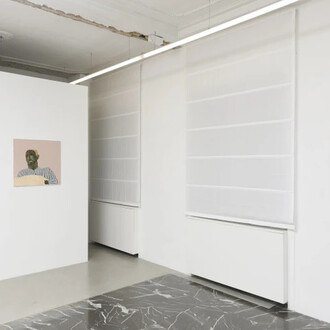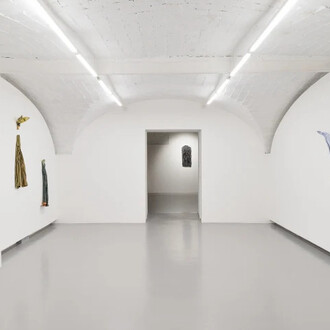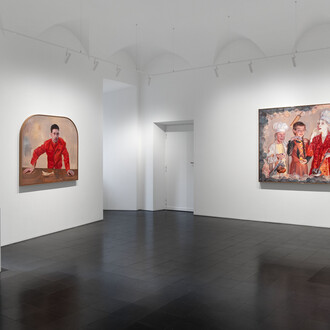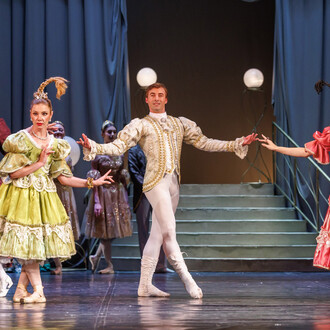Time Inside’ — Louise Giovanelli’s first solo show in Italy, at Fru a — the artist analyses the process of looking and being looked at via painted reflections on film. These considerations of painting and film revisit two media that can through their relative slow pace give pause for reflection on the act of voyeurism in the age of social media.
Giovanelli presents motifs taken from the psychological horror-thriller Peeping Tom (1960), which tells the story of Mark, a film studio employee who spends his free time working on what he calls his ‘documentary’, as he films the dying expressions of terror on the faces of the women he preys upon. The title of the film derives from the slang expression 'Peeping Tom' which describes a voyeur.
The film directly implicates the viewer in the acts of violence it depicts. While this classic representation of the dyad ‘viewer/viewed’ is still relevant today, in the age of social media we find ourselves increasingly posing for an imagined onlooker, while acting out the cliché of detached independence. This contradiction is immediately evident as the ‘act’ of independence played in the ‘selfie’ is useless without an onlooker to verify it. This aloofness performed for an audience has inculcated us all in a non stop race to be seen and yet remain hidden.
For Giovanelli, painting offers the possibility of slowing down this process, allowing images to resonate, and therefore providing a quasi-filmic space for contemplation. The titular phrase ‘time inside’ can be used to refer both to time passed alone, reflecting independently of the bombardment of social media, and time spent in prison, indicating the difficulty in escaping that same barrage through social media.
The five paintings on display employ an intense pale e, together with a distinctive vocabulary of motifs gleaned from art history and the contemporary mechanics of image production and consumption. Throughout her work, Giovanelli makes repeated use of the grid and the cut as motifs that intervene to disrupt the picture’s surface, yet never enough to allow the viewer to peer through. The paintings highlight an event, but our desires to see the before and after are frustrated.
The composition of the paintings invites viewers to trace the structure of the picture plane, approaching tantalising breaks in the surface, yet they are never enough to peer through. As such the viewer’s desires, as voyeur and as object of voyeurism are frustrated — both the perennial achievement and failure of image making throughout history.
















